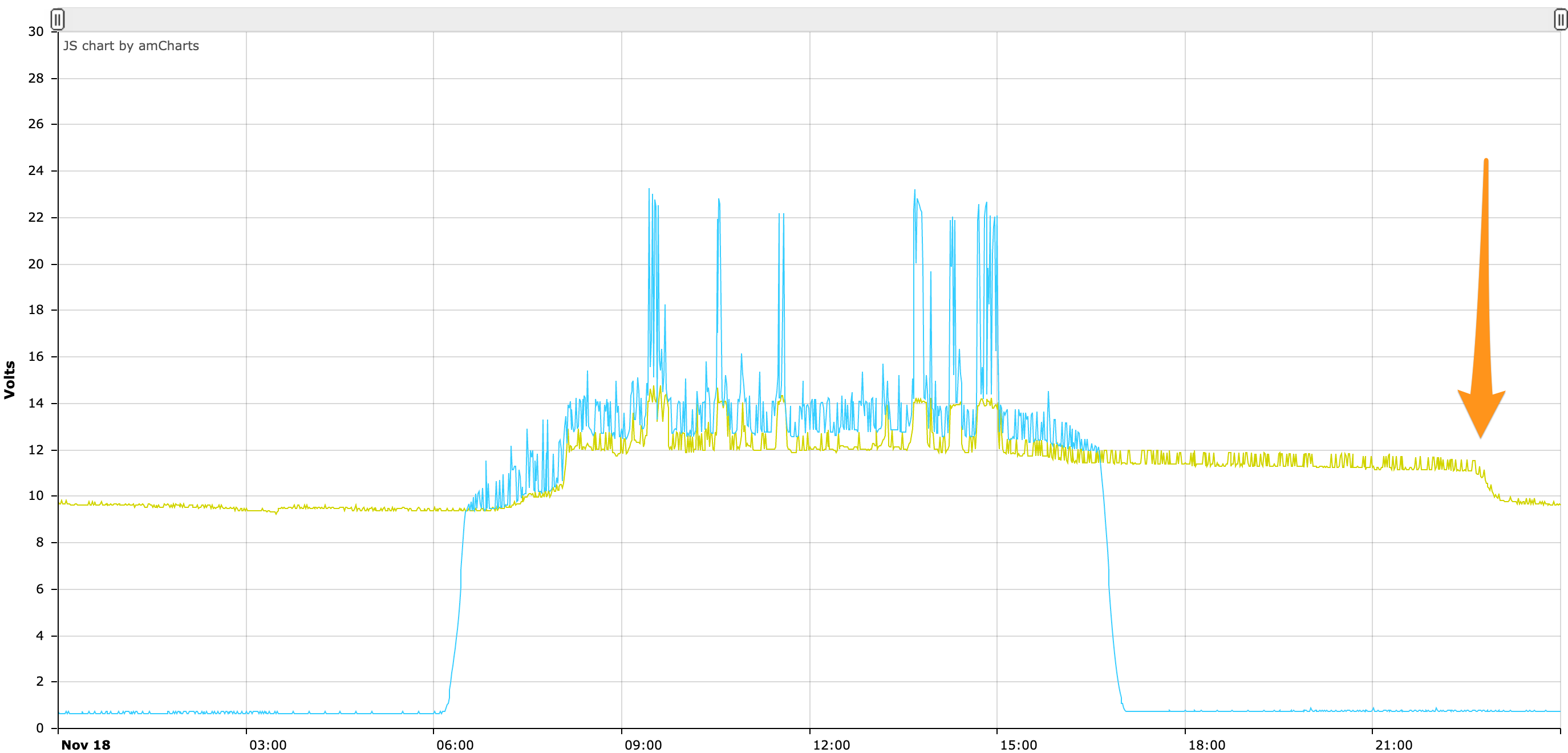As Murphy’s law would have it, our solar upgrade coincided with a strange phenomenon which affected us for the whole month of November. Our batteries voltage took a sudden drop every night around 9:00PM going to well bellow any usable voltage and leaving us scrambling for power through the nights.
Because of this unfortunate timing, and my lack of understanding of all things battery related. I ended up chasing this dip for weeks, trying everything under the sun isolate it. Long story short, all our AGM batteries are shot.
Years ago I bought AGM batteries because they are more self contained and don’t require maintenance (no off gazing, no re-filling them). A choice that made sense when everything was new and too much to think about. Today, I’m realizing that the flip side of this is that AGM batteries have a shorter lifetime and that there is nothing you can do about it. Sure they were no maintenance for a few years, but today they are between 3 and 5 years old and we have to replace them all (all $1600 worth of them).
I reevaluated our battery situation, and with a much better grasp of all things solar, I decided to go with regular flooded lead acid batteries, they are deep cycle, they have 65Ah, they have a port to maintain the chemicals in them.
It does mean I’ll be poking at them every couple of months to better quantify their state and not let a slow boiling voltage dip sneak up on me. And I’ll be maintaining the chemicals (mostly adding distilled water on occasion).
This conclusion was confirmed by chatting with a couple of old timers who have been off-grid for decades. One gets 6 to 8 years out of his batteries which are allowed to freeze (our situation today), the other gets 10 to 13 in a controlled environment and a water turbine providing constant power 24h a day. This helps the batteries not cycle so much.
It was a real education talking to people who have been doing this for decades. As I build my own experience, I make mistakes and sub-optimal decisions. For today though, I’ve eliminated a blind spot of our solar setup. I can recognize the phenomenon for what it is, the data I collect was really helpful and I have ideas for algorithms to interpret them automatically and get a health measure of the battery array.
So I bought only 3 new batteries, giving us 195Ah to get through night and cloud. It turns out it’s a thousand times better than where we were with our theoretical 775Ah as it had slow boiled down to pretty much nothing :). I’ll get in the habit of maintaining these batteries properly.

